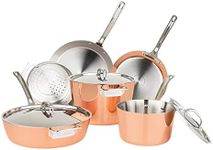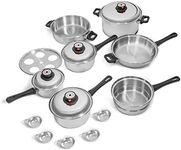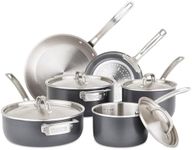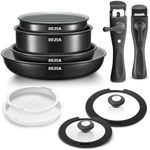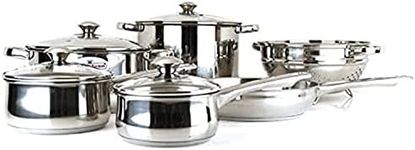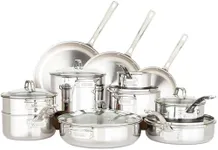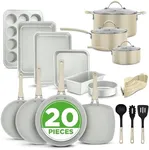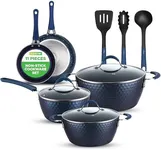Buying Guide for the Best Waterless Cookwares
Choosing the right waterless cookware can significantly enhance your cooking experience by preserving the nutrients and flavors of your food. Waterless cookware is designed to cook food without the need for added water, using the natural moisture in the food itself. This method of cooking is not only healthier but also more energy-efficient. When selecting waterless cookware, it's important to consider several key specifications to ensure you get the best fit for your cooking needs.MaterialThe material of the cookware is crucial as it affects heat distribution, durability, and ease of cleaning. Common materials include stainless steel, aluminum, and copper. Stainless steel is popular for its durability and non-reactive nature, making it ideal for cooking a variety of foods. Aluminum is known for its excellent heat conductivity but may react with acidic foods unless it has a non-stick coating. Copper offers superior heat control but requires more maintenance. Choose a material based on your cooking habits and the level of maintenance you're willing to commit to.
Core ConstructionCore construction refers to the layers of metal within the cookware, which impact heat distribution and retention. Tri-ply or multi-ply construction, which typically includes layers of stainless steel and aluminum, provides even heating and prevents hot spots. This is important for waterless cooking as it ensures that food cooks evenly without burning. If you frequently cook delicate dishes that require precise temperature control, opt for cookware with a high-quality core construction.
Lid DesignThe lid design is essential in waterless cookware as it helps create a seal that traps steam and moisture. Look for lids that fit tightly and have a steam control valve or vent. This feature allows you to regulate the steam pressure inside the pot, which is key to waterless cooking. If you prefer a more hands-on approach to cooking, a lid with a clear glass insert can be useful for monitoring your food without lifting the lid and releasing steam.
HandlesHandles should be sturdy, heat-resistant, and comfortable to grip. They play a significant role in the overall safety and ease of use of the cookware. Some handles are designed to stay cool on the stovetop, which can prevent burns and make handling the cookware safer. If you often move your cookware from the stove to the oven, look for handles that are oven-safe and ergonomically designed for a secure grip.
Size and CapacityThe size and capacity of the cookware should match your cooking needs and the size of your household. Smaller pots and pans are suitable for individuals or small families, while larger sets are better for cooking in bulk or for larger families. Consider the types of dishes you frequently prepare and choose sizes that will accommodate those recipes. Having a variety of sizes can also be beneficial for different cooking tasks.
Ease of CleaningEase of cleaning is an important factor, especially if you cook frequently. Some waterless cookware is dishwasher safe, while others require hand washing. Non-stick surfaces can make cleaning easier but may require special care to avoid scratching. Stainless steel is generally easy to clean and maintain, but it may require more effort to remove stubborn food residues. Choose cookware that fits your cleaning preferences and lifestyle.
